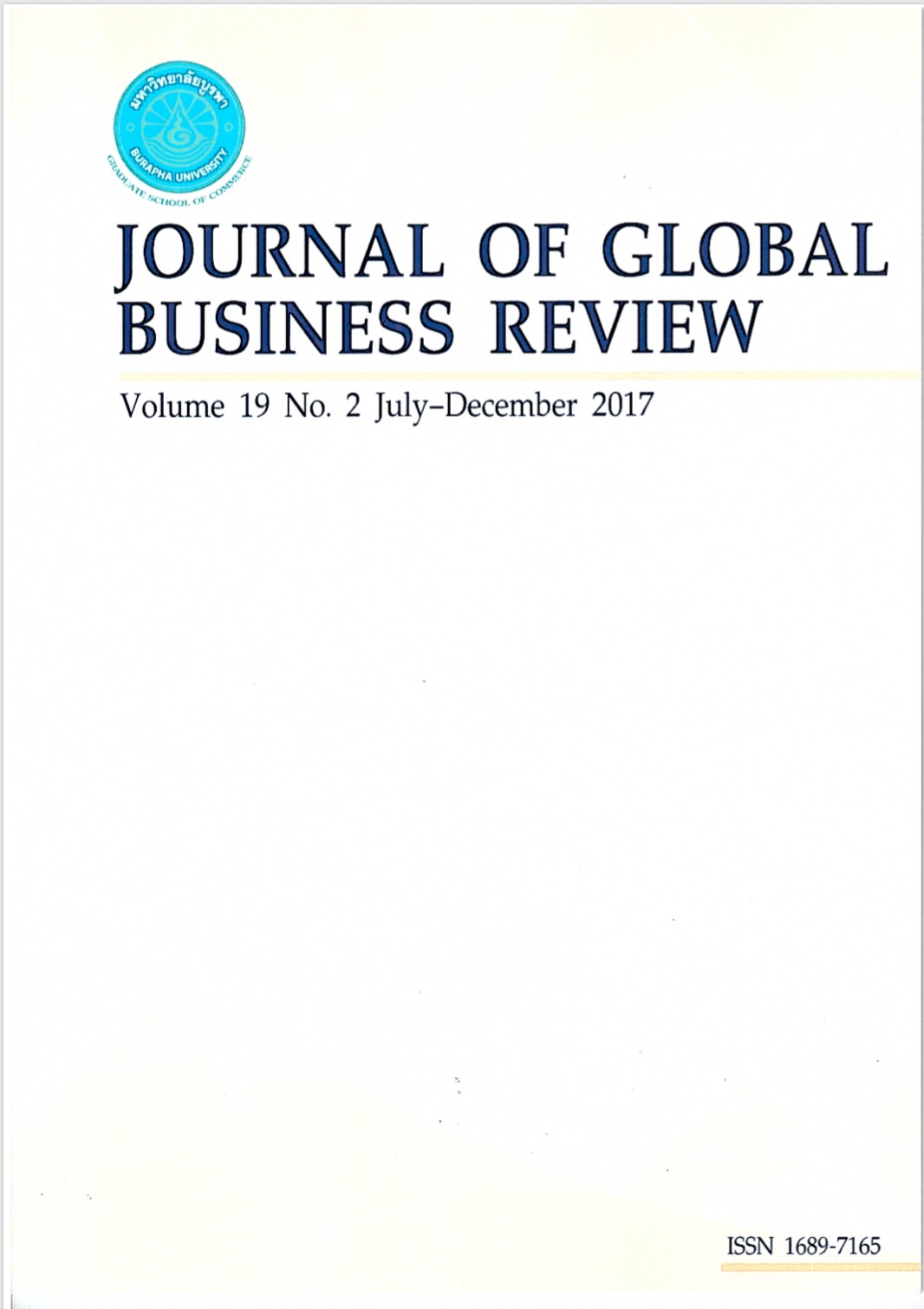The benchmarking of life insurance industry: Thailand and singapore case study
Main Article Content
Abstract
The objective of this independent study is to evaluate and compare the competitiveness of the life insurance sector in Thailand in the light of the rapid development of this industry in ASEAN and with AEC beyond 2020. The benchmarking study is based on intense data research and analysis encompassing the total life insurance industry in both countries. The guiding principle is to use data for the purpose of cross-border comparisons, allowing for ‘best practice’ analysis, SWOT analysis and ‘gap’ analysis. Finally, the Porter’s ‘Diamond’ model will be used as an analytical instrument for the evaluation of competitiveness of the industry between nations. Major results from data analysis and the benchmarking process can be summarized as: The market development for life insurance products in Thailand has been driven with high annual growth rates in terms of volume and value in recent years as in Singapore. The overall financial performance of the industry in Thailand is similar to the success in Singapore or even superior with regard to financial ratios, like Return on Assets (ROA). In areas such as technology and human resource development, Singapore seems to be more advanced than Thailand, and also the cultural environment and awareness for long-term savings and protection plans apparently had been more favorable to Singapore in the past. The competitive capabilities in particular areas like e.g. distribution of the leading five to eight life insurance companies in Thailand are promising, although there is a room for further improvement of direct marketing channels. Future growth and success in life insurance sector in Thailand may depend on openness for new business models, innovative product development and embracement of digital technologies. Finally, it can be concluded that life insurance sector in Thailand will be regarded as a growing industry with high value potential and will receive adequate support from public agencies and institutions.


